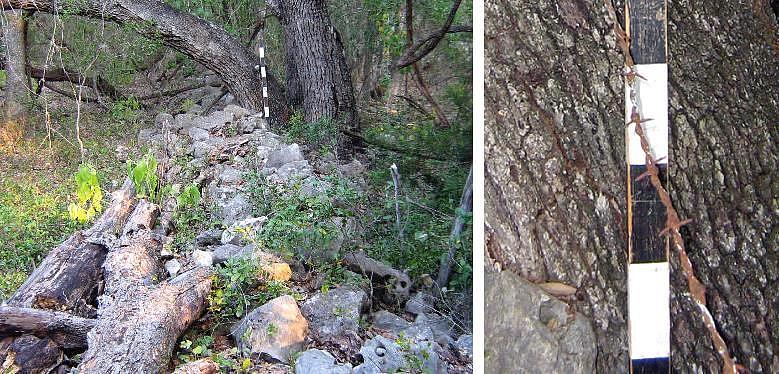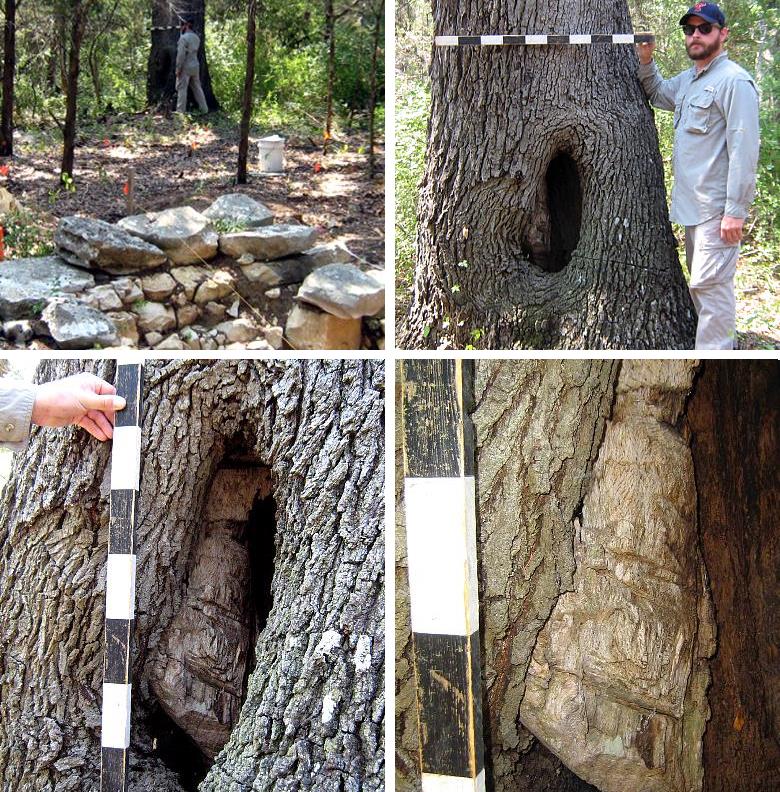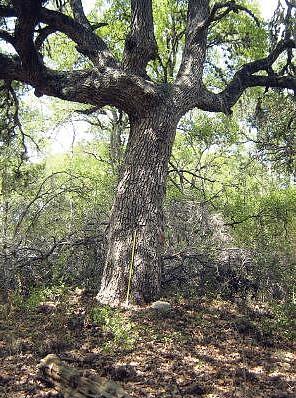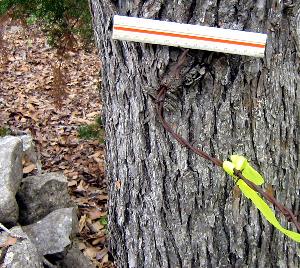Surveying Historic Trees
| Locations of large trees and modified trees documented on the landscape survey of the Williams Farmstead. Ranging in age from 100 to 300 years old, many of these trees were present during the time the Williams family lived at the farm. |
 Large oak (Tree 38) with barbed wire, part of a rock wall fencing system. |
This large oak tree (Tree 38), had a long strand of barbed wire embedded in one of its three trunks. The overview at left shows the trunk with the barbed wire growing at an angle over the top of Rock Wall F1. The closeup shows a barbed wire strand coming out of the tree trunk. This wire, and other segments of identical wire, ran east to west over the top of the rock all. This tree trunk is estimated to be about 129 years old, and it is likely that the barbed wire was added when the tree was very young, probably around or after the turn-of-the-century. The photo scale at right is in 10-cm increments. |
 Views of Tree Feature 1, one of the oldest and most unusual trees on the property. This huge oak provided shade for the cabin area and also may have harbored honeybees at one time. The scale in these photos is 1 m (39 inches) long in 10-cm increments. |
The four photos above depict the most unusual tree feature observed at the Williams farmstead. The first photo is looking southeast at the chimney firebox with the giant live oak Tree 1 in the background. Its age is estimated at more than 300 years, and the tree is located at the southeast corner of the yard area. Being perhaps 170 to 200 years old, it would have been a large tree when the Williams family lived there, and it certainly would have provided a nice shady area for outdoor activities. The bottom two photos are closeup views of a large tree cavity on the north side of the tree. The 10x24-inch tree cavity is natural and contains a large knot that is extensively modified. The knot has numerous cut marks made with a straight-bladed metal implement such as an axe or an adze, and this modification appears to be very old. There is no definitive evidence of why someone would modify the tree in this way, but we do have one theory. In the summer of 2009, a large honeybee hive was present in a large oak tree nearby (Tree 2). Honeybees establish new colonies regularly, but they tend to live in one area for many generations. We speculate that there may have been a honeybee hive inside the Tree 1 cavity and that someone in the Williams family chopped away part of the tree knot to widen the opening so they could gather the honey. A source of free honey would have been an important resource on a rural nineteenth-century farmstead. |

